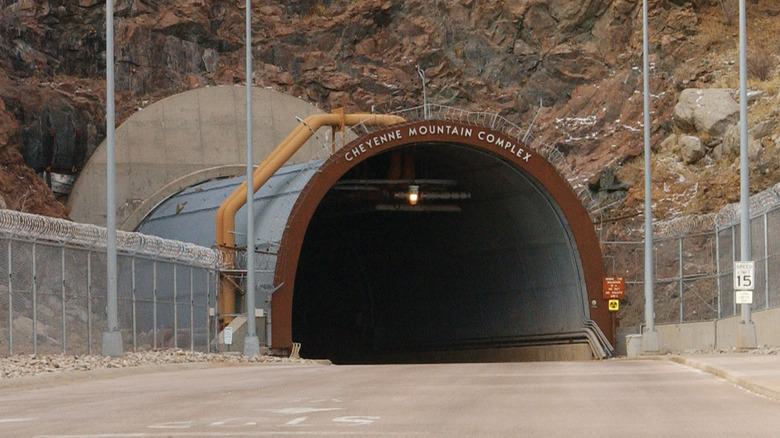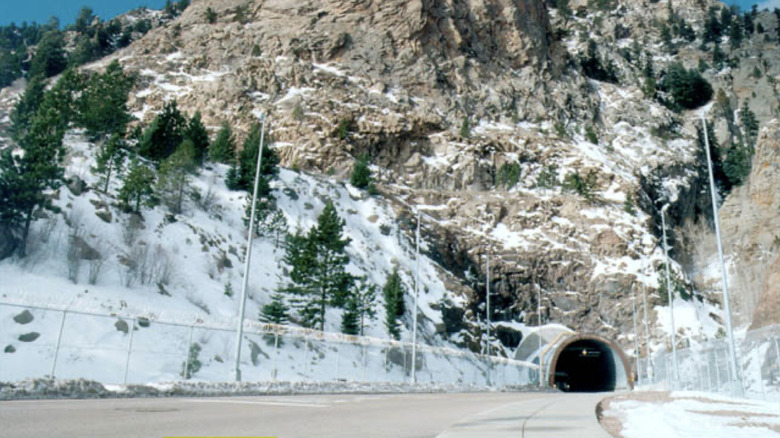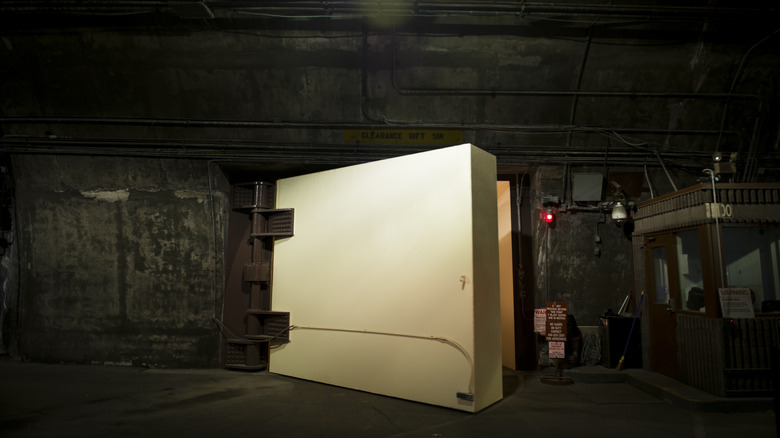What Is The Cheyenne Mountain Complex And Is It Still Relevant Today?
The threat of nuclear-equipped bombers from the Soviet Union flying over American cities was serious during the height of the Cold War in the 1950s. This potential threat forced U.S. defense experts to realize that a concerted and integrated network of air defenses was needed to protect against such incursions and possible nuclear strikes. To make such a network viable though, a hardened and well-placed command center that could take a blow from a Soviet attack and continue operating was needed. The location that fit the bill was Cheyenne Mountain near Colorado Springs, Colorado.
Through the planning and efforts of Generals Benjamin Chidlaw and Early Partridge, construction on such a facility began on June 19, 1961. The Cheyenne Mountain Operations Center (CMOC), typically referred to as the Cheyenne Mountain Complex or just Cheyenne Mountain, was a massive construction effort. Placed 1,500 feet underground, engineers removed 693,000 tons of granite to carve out a 5.1-acre complex. The space would see 15 buildings erected, which sit on 1,300 springs, 18 inches from the rock wall, so as to move with the shockwave of a nuclear attack.
The foresight of the planners hardened it against an EMP (electromagnetic pulse) which results from a nuclear detonation. Cheyenne Mountain Air Force Station (AFS) deputy director Steven Rose said, "Back then, it was just part of the effect of a nuclear blast that we were designed for at Cheyenne Mountain." The facility would be deemed fully operational on February 6, 1967, at a total construction cost of $142.4 million.
Why is Cheyenne Mountain important?
The establishment of Cheyenne Mountain created a central brain for air defense command and control and not just for the United States. Thanks to the Ogdensburg Declaration of 1940, the U.S. partnered with Canada in establishing a North American air defense network, which created a web of radar networks across the U.S. and Canada. This agreement would evolve into the creation of the North American Air Defense Command (NORAD) in September 1957, with Cheyenne Mountain as the central command center.
The complex has housed other critical agencies, including U.S. Strategic Command, U.S. Air Force Space Command and U.S. Northern Command (USNORTHCOM). Cheyenne Mountain and its attendant agencies are tasked with several critical missions including aerospace warning, aerospace control and air attacks (such as ballistic missiles or aircraft). These missions have evolved over the decades, as has Cheyenne Mountain's role in the defense of the U.S. and North America. As of May 12, 2008, the Cheyenne Mountain Command Center has been designated the NORAD and USNORTHCOMAlternative Command Center with Peterson Air Force Base now serving as the primary lead.
Into the future...
The threats and needs of air and space defense continually evolve as does Cheyenne Mountain to meet them. Currently, the complex is known as Cheyenne Mountain Space Force Station (CMSFS) and is operated by Air Force Space Command. The facility continues to serve as an alternative command center to nearby Peterson Air Force Base, while additionally acting as a training center for various entities such as the Air Force and Space Force. This is no problem, as the complex is so large that less than 30% of its total space is used by NORAD and USNORTHCOM.
No longer faced with the singular threat of a nuclear-powered Soviet Union, Cheyenne Mountain has a more challenging job of scanning for threats from multiple fronts. Should a nuclear attack occur, the facility can close its 25-ton steel doors in 40 seconds, while continuing to respond and react accordingly. Cheyenne Mountain AFS branch chief for NORAD/NORTHCOM, Lt. Col. Tim Schwamb said, "This is where the best minds in NORAD and U.S. Northern Command are, so that we can see, predict, and counter any threats that would happen to the homeland and North American region." As "America's Fortress," Cheyenne Mountain will continue to be a critical part of both the U.S. and North America's air and space defense for the foreseeable future.


